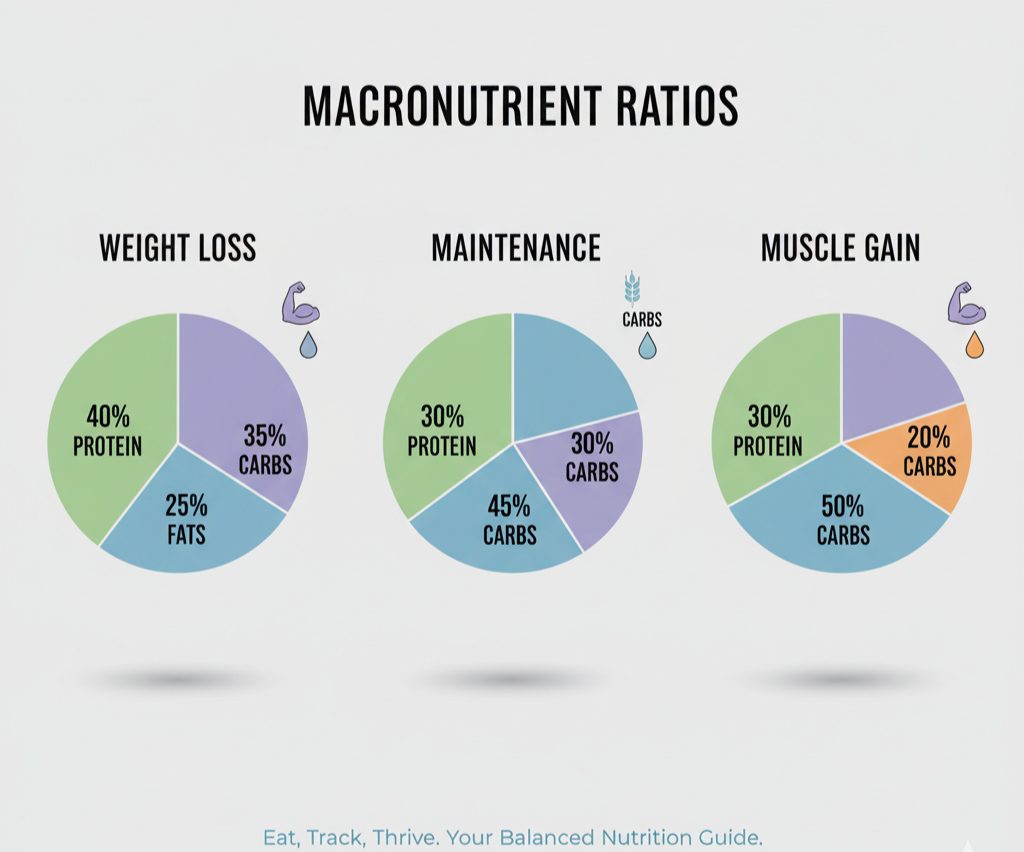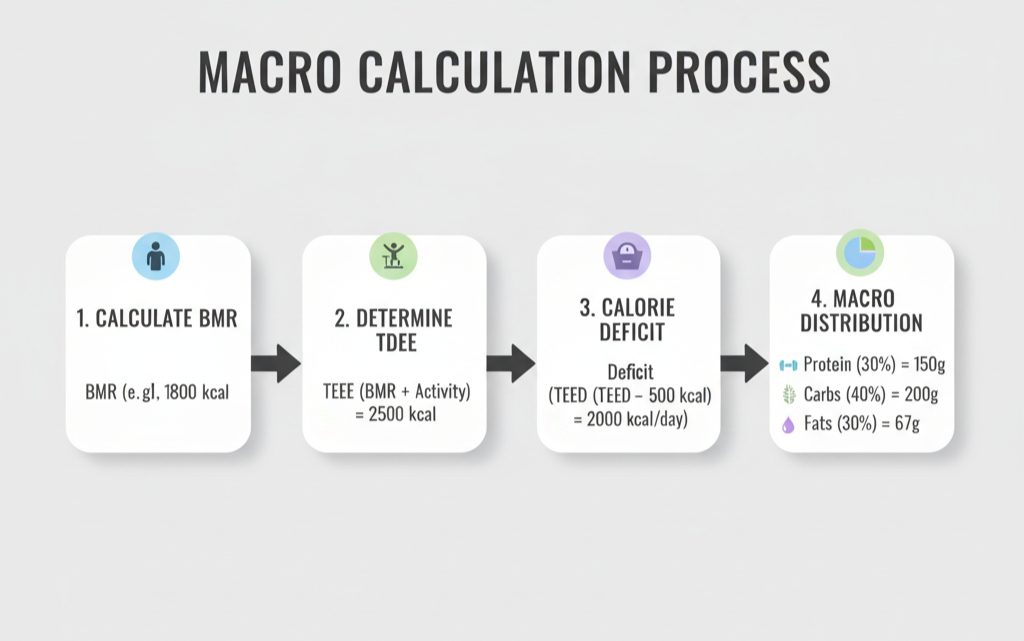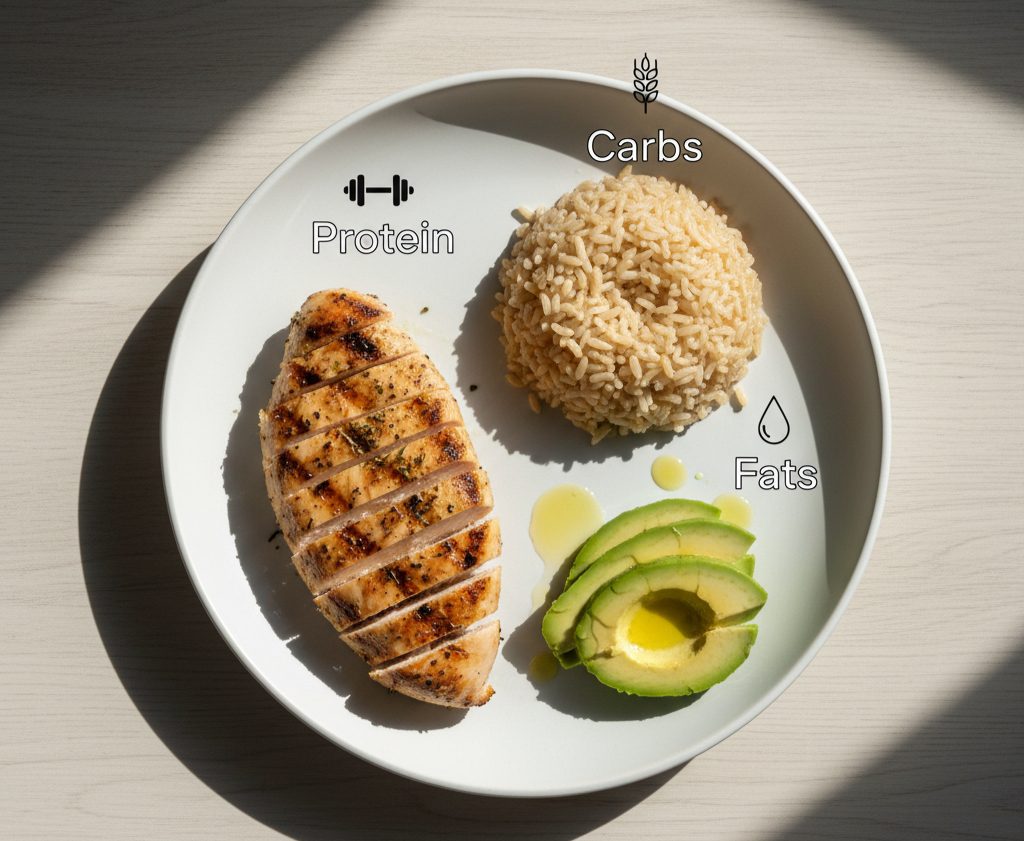Step-by-step guide to accurately calculating your macronutrients for optimal weight-loss and fitness goals.
Introduction
“Tracking macros” sounds technical, but once you grasp the basics it becomes the most reliable way to transform your body. Macros—protein, carbohydrates, and fats—drive energy, recovery, and results. Guessing leads to frustration; measuring creates progress.
This guide shows you how to calculate macros with simple math, science, and free tools like the Calorie Calculator and Macro Calculator from NutriFitCalc.
What Are Macros & Why They Matter?
- Protein — builds muscle, tissues, enzymes, hormones.
- Carbohydrates — primary energy for brain & training.
- Fats — hormone balance, brain function, long-term energy.
| Macro | Calories per gram |
|---|---|
| Protein | 4 kcal |
| Carbohydrates | 4 kcal |
| Fat | 9 kcal |
When you know the grams you need, you control calories and body composition—matching intake to your metabolism, activity, and goals.
Step 1 — Find Out How Many Calories You Need
Your needs depend on age, gender, weight, height, activity level, and goal (loss, maintenance, gain). Use the Daily Calorie Calculator. It applies the Mifflin–St Jeor formula to estimate BMR and adjusts for activity to get TDEE.
- Weight loss: aim for a 15–25% deficit below TDEE.
- Muscle gain: aim for a 10–15% surplus above TDEE.
Example: If TDEE = 2,200 kcal and goal is fat loss, start around 1,800–1,900 kcal/day.

Step 2 — Set Your Macro Ratios
| Goal | Protein | Carbs | Fat |
|---|---|---|---|
| Weight Loss | 40% | 35% | 25% |
| Maintenance | 30% | 45% | 25% |
| Muscle Gain | 30% | 50% | 20% |
| Low-Carb/Keto* | 25% | 10% | 65% |
*Use low-carb/keto under appropriate guidance.
Example (1,800 kcal at 40/35/25):
Protein = 720 ÷ 4 = 180 g · Carbs = 630 ÷ 4 = 158 g · Fat = 450 ÷ 9 = 50 g
Step 3 — Adjust for Your Body Type & Activity
Body-type tweaks
- Endomorph: carbs 25–35%, moderate protein, higher fat.
- Mesomorph: balanced (~30–40% carbs, 30% protein, 30% fat).
- Ectomorph: higher carbs (45–55%), moderate protein, lower fat.
Activity notes
- Heavy lifting/HIIT → slightly more protein & carbs.
- Light/sedentary days → slightly lower carbs.
Step 4 — Use NutriFitCalc to Make It Easy
Skip manual math. The Macro Calculator gives you:
- Total daily calories
- Grams of protein, carbs, and fats
- Percentage breakdown for each macro
Pair with the BMR Calculator & BMI Calculator for precise tracking.
Step 5 — Track Your Macros Daily
- Use apps (MyFitnessPal, Cronometer) + a food scale.
- Track at least two weeks to spot patterns.
- If energy tanks or loss is too fast → increase slightly; if stalled → reduce by 100–200 kcal.

How to Calculate Protein for Weight Loss
Aim for 1.6–2.2 g/kg body weight while cutting.
Example: 70 kg → 112–154 g/day.
Top sources: chicken breast, eggs/whites, Greek yogurt, fish (salmon/tuna/cod), lentils/beans/tofu.
Protein increases satiety, preserves muscle, and raises TEF slightly.
How to Calculate Carbs for Energy & Recovery
For fat loss: 2–4 g/kg (higher end if training harder).
- Choose smart carbs: oats, brown rice, quinoa, fruit/veg, sweet potatoes, whole grains.
- Avoid frequent refined carbs (pastries, white bread, sugary snacks).
How to Calculate Healthy Fats for Hormone Balance
Target 0.8–1.0 g/kg body weight, or ~20–30% of calories.
- Best sources: olive oil, avocado, nuts; seeds (chia/flax/sunflower); fatty fish (salmon/mackerel).
- Avoid trans fats and heavily processed oils.
Step 6 — Adjust & Recalculate Every Few Weeks
- Recalculate every 4–6 weeks or after every 2–3 kg change using NutriFitCalc tools.
- Watch for: dropping energy, rising hunger, or 2+ week stalls.
Common Mistakes to Avoid
- Guessing portions—measure early on.
- Ignoring hidden calories (oils/sauces/drinks).
- Going too low—huge deficits trigger rebounds.
- “Off” weekends erase weekday progress.
- Expecting instant results—steady beats speedy.
Example Macro Calculation (Step-by-Step)
Person: Female, 28, 65 kg, 165 cm, lightly active. Goal: weight loss.
- BMR (Mifflin–St Jeor): (10×65) + (6.25×165) − (5×28) − 161 = 1,377 kcal
- TDEE: 1,377 × 1.375 = 1,894 kcal
- Deficit (−20%): 1,894 × 0.8 = 1,515 kcal/day
- Split 40/35/25:
- Protein: 40% → 606 ÷ 4 = 151 g
- Carbs: 35% → 530 ÷ 4 = 133 g
- Fat: 25% → 379 ÷ 9 = 42 g
Daily target: 151 g protein, 133 g carbs, 42 g fat (~1,515 kcal).
Tips to Make Macro Tracking Easier
What Happens When You Get Your Macros Right
- Steady fat loss without feeling starved
- Consistent daytime energy and better workouts
- Fewer cravings and improved body composition
Macro tracking isn’t “being on a diet”—it’s learning what your body needs. With practice, it becomes second nature.
Final Thoughts
Start with your calories via the Daily Calorie Calculator, then get precise macros with the Macro Calculator. Track weekly, adjust every few weeks, and watch your results compound—no more guesswork.
FAQs
About the Author
This article is written by the NutriFitCalc Team, a group of Food Science and Nutrition students who create simple, research-backed guides for healthy living.
We review global health sources like WHO and CDC to keep our content accurate and helpful.
